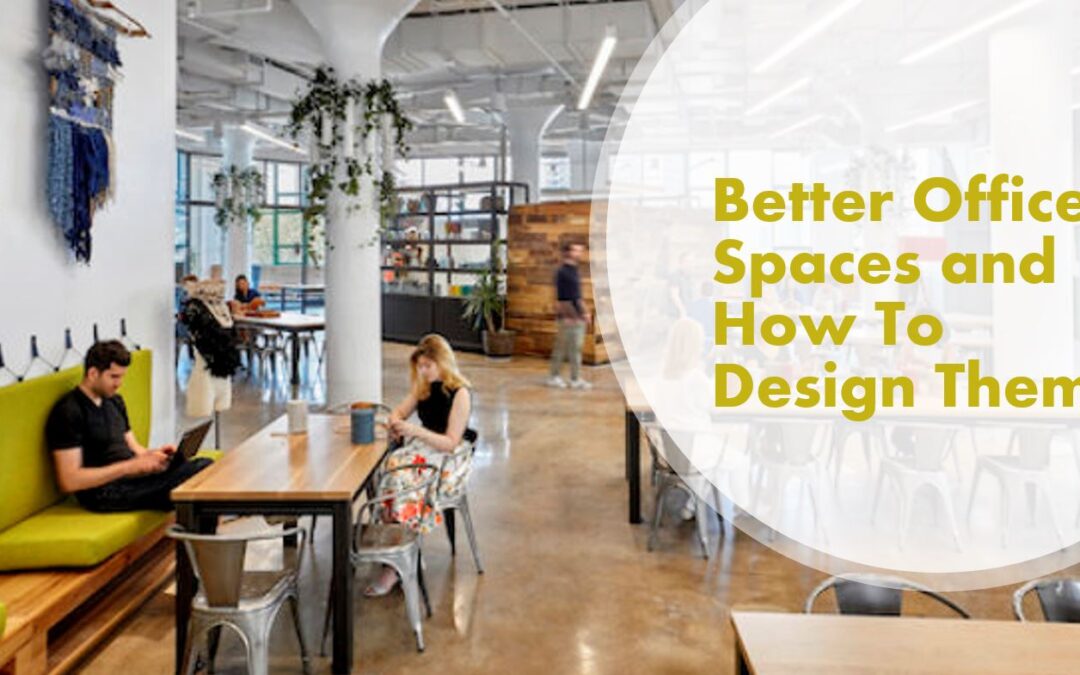| What Makes A Better Office Space? And How Do We Design Them? |
The onset of COVID-19 pandemic and the subsequent rise in people working from home has revealed the need for better designed office space. Dezeen – an online architecture and interior design magazine based out of London, has partnered with architecture firm, TP Bennett, to investigate what makes an office better, and how to implement these ideas. The two hosted a joint webinar and EDD is here to breakdown some of the largest takeaways.
COVID is not a Gamechanger, it is an Accelerator: COVID-19 has swept aside cultural and societal preconceptions about what is “acceptable” and has forced us to look toward the future. We are now envisioning a workplace that addresses our previous concerns while creating a space that suits human beings much better. People miss their interactions with colleagues and the casual human interaction that sparks innovation and creates connections.
Care: Care in the workplace is about inclusivity and accessibility in all its forms – not just what meets the eye. It includes non-traditional accessibility and recognizing neurodiversity, personality differences, personal well-being, and comfort. Individuals can find well-being and comfort in their homes while working from home, such as the ability to work during productive hours and the flexibility to chose to slow down. Our job is to create new office space that incorporate this level of care as an integral design.
Community: The shared feeling of ‘we are in this together’ and the resilient mentality of ‘making it work no matter what’ was first experienced during the pandemic and has created a sense of community that will now be central to the future office. People have missed the informal interaction of coming together in an office, one of the main reasons why we want to return in the first place.
Individual: Recognizing that the office is there to support not only the community but also the individual, is critical. Giving everyone access to an environment that enables them to thrive as individuals as well as workers, and a place to learn, evolve, and impart those learnings to those that come after them, is essential. Offices are created around the group, the business, but it is the individual and the persons’ personalities that changes the experience and choices in how we work.
Digital: We would not be in where we are as a society, or as a world, without the innovations of technology. If technology did not exist, 2020 could have been the end of civilization as we know it…Digital environments will undoubtedly be ubiquitous in future offices. Digitization will be seamless, inclusive, and supportive. Future office’s must incorporate technologies that will enable full equality no matter your geographic location, so people on screen can feel just as engaged as the people in the room.
Human: If the concept of offices were to be born today, offices would be built to enhance human activity. Offices are the structural support to the human activities that take place within them. When designing a better office space, we must recognize that different activities are best suited in different kinds of spaces, and then work with clients to identify each building’s challenges and explore opportunities in the best way possible. For example, some people need the ability to work in a setting that looks out onto nature or human activity, while others need spaces with minimal distractions where they can dim the lights and work with deep intellectual concentration. COVID-19 has lent us the unique opportunity to stop seeing humans as product-producing-machines that need to be jam-packed in the most space-efficient way, and rather encourage humans to perform at their best to help the businesses thrive. And when businesses thrive, communities thrive – offices play a huge role in that.
Home: Offices must learn to create workspaces that mirror the feeling we get from being home. People have gotten used to the variety and flexibility of spaces offered at home and may get frustrated about having to transition back to sitting at a desk all day. Offices may choose to translate the flexibility by allowing employees to differentiate spaces for when they want to focus or collaborate. They may also allow departments to choose their own environments within the office. Allowing everyone a choice of where they work within the office will optimize focus, collaboration, and creation.
Quality: Offices of the future will offer choice, comfort, and a fun environment. These offices will have to consider the five senses (sight, touch, smell, taste, and sound) in an equal way to deliver the ideal environment. Ambient noise, and the sense of sound, has been discovered to deliver a huge psychological impact to those within the environment. We are now seeing more traditionally corporate sectors, such as banking or law firms, where music is played in their key spaces. Music is a direct part of the hospitality and individual experience. It is not about that formula of how much square feet a person needs in the office, but rather ‘let’s share the space and be more communal about it and get more out of our space’. Offices of the future will focus on the quality of a space rather than the quantity.
